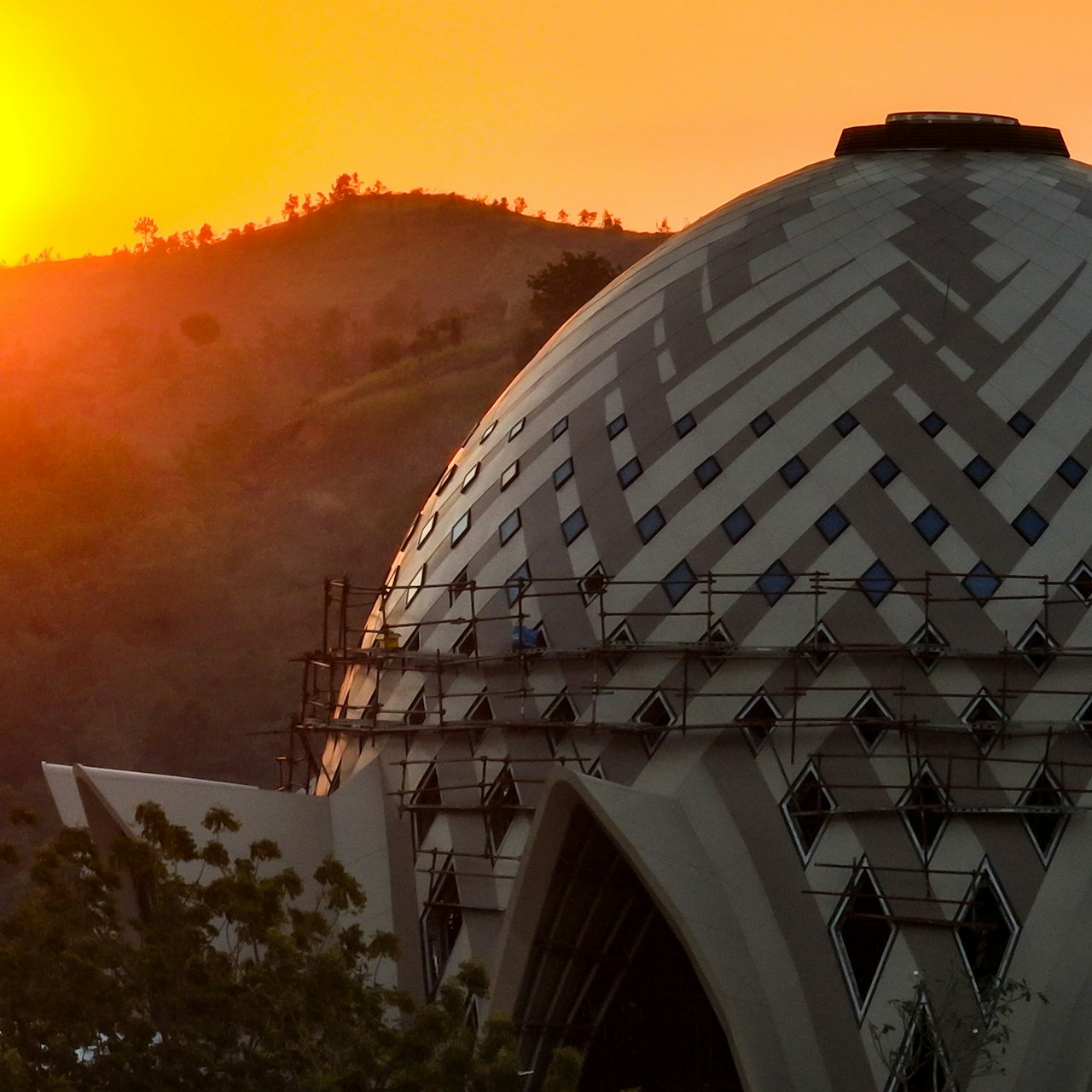
Papua New Guinea
Emerging House of Worship stands as a symbol of unity
Unique woven exterior of the emerging temple in Papua New Guinea has recently been completed; the pattern is symbolic of unity and coming together of diverse groups.

Unique woven exterior of the emerging temple in Papua New Guinea has recently been completed; the pattern is symbolic of unity and coming together of diverse groups.
PORT MORESBY, Papua New Guinea — As the sun rises over Port Moresby, it illuminates a unique woven exterior that wraps the emerging Bahá’í House of Worship in its embrace. The design of the recently completed façade—inspired by traditional weaving—is symbolic of unity and the coming together of people of different backgrounds from across Papua New Guinea.
In a land enriched by over 1,000 ethnic groups, this sacred structure, now nearing completion, beckons all people. Kevin Tagos, a worker on the site, says, “We come from different parts of Papua New Guinea and learn from one another. We share stories about the beauty of the House of Worship and how it binds us together.”
Houses of Worship are described in the Bahá’í teachings as vital institutions that exemplify in a tangible form the integration of worship and service. This idea is finding greater expression in the communities surrounding the temple, as growing numbers of people regularly gather at the site to pray and to contemplate how they can serve the needs of their fellow citizens.
Advances in the construction work in recent months can be seen in the images below.
These images show the installation of the intermediate layer of the façade and a blue protective coating. The protective coating was eventually removed before the final layer of the façade was fastened to the intermediate layer.
The final layer of the façade was installed on top of the intermediate layer.
The final outer layer of the façade is made of painted aluminum pressed with a stone texture and has now been installed.
The glass oculus at the topmost point of the dome was carefully raised and placed in position.
The 60 kilometers of aluminum strips that were woven in a community project were installed on the interior walls and ceiling of the House of Worship.
This image shows another view of the interior where workers are installing woven mats around the oculus of the dome.
After installation of the interior weaving, trimming was added in a contrasting color to create a beautiful geometric pattern.
Plants and native trees, together with diverse fruit and palm trees, have been planted on the temple site.
The footpaths to the temple are now taking shape.
Work continues on the steps made from local stones that connect the footpaths to the House of Worship.
The visitor center is now emerging in the shadow of the temple.
Residents from surrounding communities regularly gather at the temple site to pray and assist with various tasks.
Sunset view of the Bahá’í House of Worship.